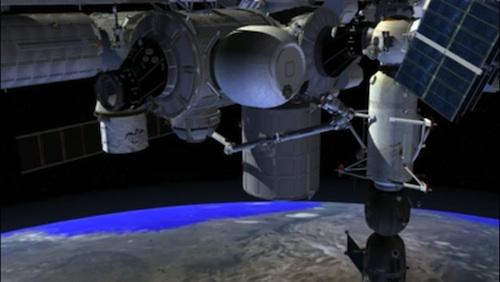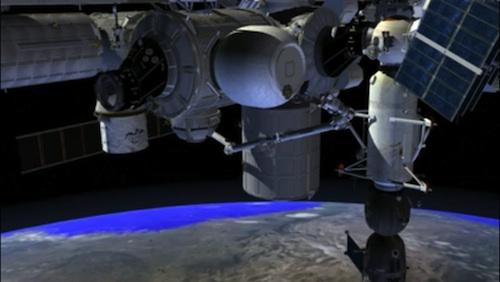NASA Awards Bigelow Aerospace $17.8M to Add New Module to ISS
February 20, 2013

Bigelow Aerospace will deliver a new addition to the International Space Station (ISS) through a $17.8 million contract with NASA, officials from both organizations said in a recent press conference.
NASA and ISS international partners will use the addition -- called the Bigelow Expandable Activity Module, or BEAM -- mainly as a technology demonstration to see how a space module made of non-metallic material instead of aluminum will handle radiation and thermal transmissions in space, said Lori Garver, NASA's deputy administrator.
NASA and its ISS international partners also want to familiarize astronauts living in space for long periods of time with BEAM and explore technologies and alternative space habitats for future long-term space missions, she said. NASA's Advanced Exploration Systems (AES) Program is sponsoring the deal.
NASA has posted a video animation of BEAM on its website.

BEAM, which is cylindrical, weighs about 3,000 pounds and is about 13 feet long and 10.5 feet wide. It is scheduled to launch on a SpaceX commercial rocket on May 2015 and berth with the ISS Tranquility node thereafter using the station's robotic arm. The expandable module will be connected to the ISS for a period of two years, during which time astronauts can go in and out of the module from other nodes of the station. After two years it will be jettisoned from the ISS and burn up upon re-entry into the earth's atmosphere, Garver said.
Specifically, BEAM is comprised of a series of structures, including a "scuffcoat" internal membrane with an air barrier structure inside, said Bigelow's founder and president Robert Bigelow.
Additionally, the module has "multiple layers of material that provide debris protection and radiation protection," he said during the press conference. The company's interest in developing a module that would mitigate thermal influences was not as high given that the structure will reside on the "shady side of the station," he added.
The move to use BEAM is not only a technologically experimental one for NASA, but also one of the agency's first grand gestures since it began working with private-sector partners as part of a commercial space program, according to Garver. "It's our first commercial real estate in space, if you will," she said.
NASA, which has experienced budget problems in the last few years, is teaming with commercial space partners like Bigelow and Boeing to continue its exploration of space beyond low-earth orbit. By teaming with these partners, the agency hopes to engage in experimentation that will allow humans to live in space for longer periods of time, as well as establish a space station on the moon, among other endeavors.
When President Obama took office, the space station was meant to de-orbit by 2015, Garver said. However, NASA and its partners will now use the space station through 2020 with help from commercial space partners. "For us the space station has been a stepping stone to going farther," she said. "We always knew there would be a time when NASA wasn't footing the whole bill." The partnership with Bigelow is a part of this sharing of expenses.
Bigelow Aerospace, based in Las Vegas, is a company created by Bigelow -- an entrepreneur as well as a space-exploration and paranormal enthusiast -- and his wife Victoria Lacas Alexander. So far, the pair have invested $250 million of their own money in the company and plan to invest at least that much more to reach its goals for space exploration, Bigelow said.
Related posts:
About the Author(s)
You May Also Like



